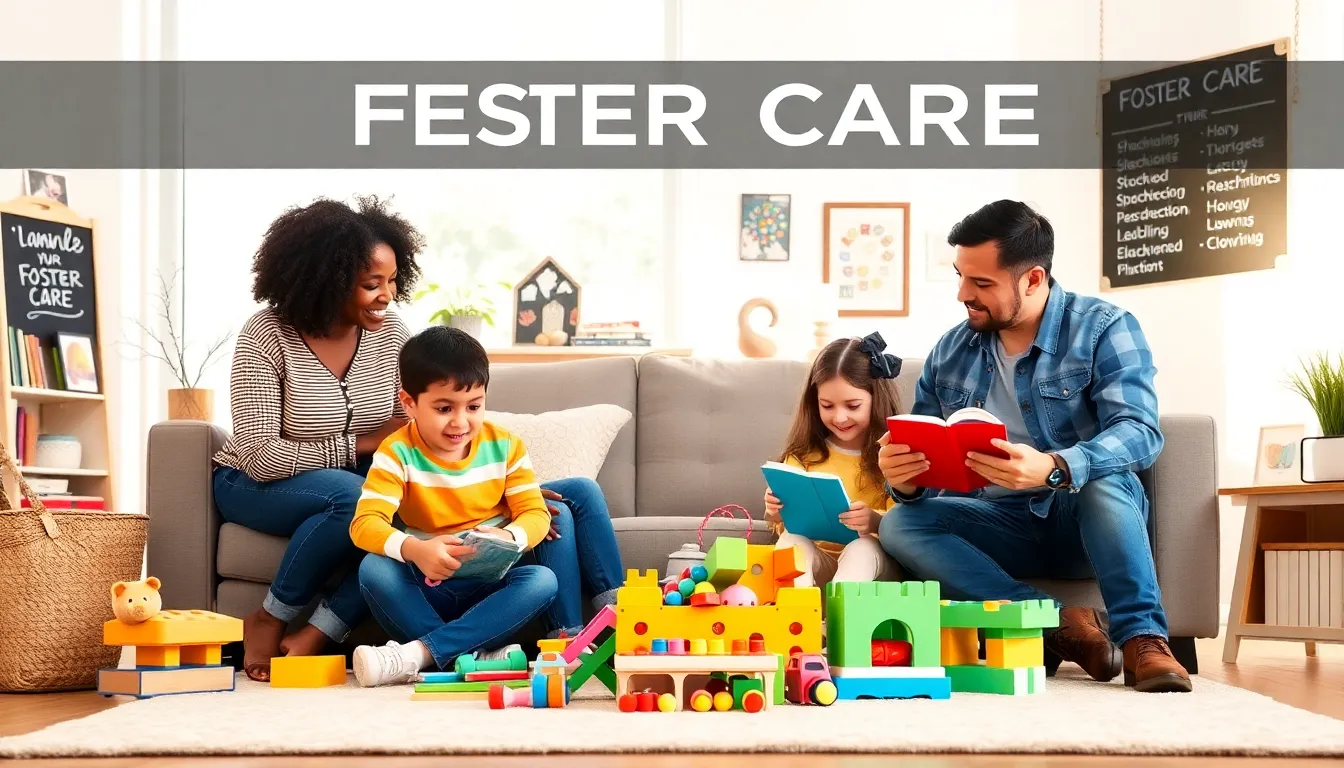In the world of child welfare, two terms often get tossed around like confetti at a parade, fostering and adoption. But let’s be honest: they’re not the same thing. Fostering is like being a temporary superhero, while adoption is the full-fledged, lifelong commitment. Ever wondered what sets them apart? Strap in, because we’re about to dive deep into the heart of these two vital roles in raising children. Ready? Let’s go.
Table of Contents
ToggleUnderstanding Foster Care

What Is Fostering?
Fostering is a unique caregiving arrangement where individuals or families take in children who cannot currently live with their biological parents. It’s a short-term solution aimed at providing a safe, caring environment until a more permanent arrangement can be made. These foster parents step in during challenging times, offering love and support to children who may be struggling.
The Purpose Of Foster Care
The primary purpose of foster care is to provide stability and safety for children in crisis. It addresses situations where children might be removed from their homes due to neglect, abuse, or family instability. Foster care intends to reunite children with their biological families whenever possible. When that’s not feasible, the goal shifts to finding a permanent home through adoption or other means.
Types Of Foster Care
Foster care isn’t a one-size-fits-all approach. There are various types, including:
- Traditional Foster Care: The most common form, where children live with a licensed foster family until they can be reunified with their parents.
- Kinship Care: This involves placing children with relatives or close family friends who can provide care.
- Emergency Foster Care: Designed for urgency, this type involves temporary placement when children are taken from their homes on short notice.
- Respite Care: This provides short-term relief for regular foster parents, giving them a break while the child stays in a different foster home.
The Fostering Process
Becoming A Foster Parent
Interested in becoming a superhero? The first step is understanding the application process. Aspiring foster parents are required to undergo training and background checks to ensure they can provide a safe environment for children. They’ll learn essential skills like effective communication and behavior management, preparing them to handle the bumps in the road.
Foster Care Regulations And Requirements
Regulations around foster care can vary significantly by state. Common requirements usually involve being at least 21 years old, undergoing a home study, and demonstrating financial stability. Also, foster parents must agree to work cooperatively with social services, emphasizing the team approach in foster care.
Support And Resources For Foster Parents
Foster parents enjoy access to an array of support services. Many agencies provide training programs, counseling, and respite care options. These resources are crucial, as they help foster parents navigate the emotional and practical challenges of the fostering journey. Support groups also allow foster parents to connect with others experiencing similar situations, fostering a community in which they can share experiences and solutions.
The Adoption Process
What Is Adoption?
Adoption is the legal process through which an individual or couple becomes the permanent parents of a child. Unlike fostering, which is temporary, adoption signifies a lifelong commitment to parenting.
Types Of Adoption
Adoption also comes in various forms:
- Domestic Adoption: Involves adopting a child from within the same country, often through state agencies or private adoptions.
- International Adoption: Involves bringing a child from another country into the adoptive family.
- Step-Parent Adoption: Occurs when a step-parent adopts their spouse’s child, solidifying the legal relationship.
The Adoption Journey
Adoption can be a long but rewarding journey. The process often includes paperwork, home studies, and interviews, all designed to ensure the best match between the child and the adoptive parents. Patience is key, as waiting periods and legal challenges can arise.
Emotional Aspects Of Fostering And Adoption
Challenges And Rewards Of Fostering
Fostering has its ups and downs. On one hand, foster parents experience the joy of providing safety and stability to children in need. On the other hand, they often face emotional attachments that can make the eventual separation difficult.
Challenges And Rewards Of Adoption
Adoption also brings its own set of challenges. Adoptive parents may initially face hurdles like potential behavioral issues stemming from trauma. Nevertheless, the rewards of creating a loving, permanent home far outweigh the challenges. The bond formed in an adoptive family can provide an incredible sense of fulfillment.
Legal Considerations
The Legal Framework For Fostering
Foster care operates within a specific legal framework designed to protect the rights of children and their biological parents. These laws mandate regular reviews and checks to ensure the child’s welfare is always prioritized. Foster parents must adhere to these regulations while advocating for the best interests of the child.
The Legal Framework For Adoption
The adoption process includes a legal aspect that finalizes the parental rights of the biological parents and transfers them to the adoptive family. This process usually involves court proceedings and home studies to ensure an appropriate match. Once adopted, the child’s new legal status provides a sense of permanence that is crucial for emotional development.










